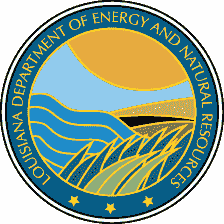Coastal Nonpoint Pollution Control Program (CNPCP)
The Coastal Nonpoint Pollution Control Program (CNPCP) is being developed, in partnership with the Louisiana Department of Environmental Quality (LDEQ) and other governmental and non-governmental agencies, to educate Louisiana coastal users about available best management measures, and to reduce pollutants that may impact the coastal waters of Louisiana. Map of the coastal nonpoint area.
Nonpoint source pollution - the pollution of our nation's waters caused by rainfall or snowmelt moving across the ground, picking up and carrying natural pollutants as well as pollutants caused by human activities. These pollutants make their way into our lakes, streams, wetlands, coastal waters and ground waters where irreparable damage has been, and will continue to be, done that will alter forever the water resources of our planet.
In 1990 the United States Congress passed the Coastal Zone Act Reauthorization Amendments (CZARA) which entrusted the States with the task of developing and implementing State CNPCPs. Section 6217 of CZARA required that states with federally approved coastal zone management programs develop and implement CNPCP. These states must implement management measures approved by NOAA and EPA that will control or prevent nonpoint source pollution from five designated sources: agriculture, forestry, hydromodification, marinas and recreational boating, urban runoff (TSS) and wetlands, riparian areas, and vegetated treatment systems.
Louisiana CNPCP Document (1995): Volume 1 Chapters 1 - 3, Chapter 4 / Volume 2 / Volume 3
Management Measures
- Agriculture
- Forestry
- Hydromodification
- Marinas and Recreational Boating
- Urban Runoff (TSS)
- Wetlands, Riparian Areas, and Vegetated Treatment Systems
- Oil & Gas
- Energy
- Mineral Resources
- Conservation
- Coastal Management
-
Oil Spill Coordinator's Office
- Oil Spill Coordinator's Office Home
- Oil Spill Response
- Natural Resource Damage Assessment (NRDA)
- The Louisiana Regional Restoration Planning Program (RRP Program)
- Louisiana Regional Restoration Planning Program (RRP Program) Administrative Record
- Education and Outreach
- Acts, Regulations, Guidelines, & Plans
- About DENR
- Offices
- Media Center
- Contact Us
- Information Portals
- Featured Services
